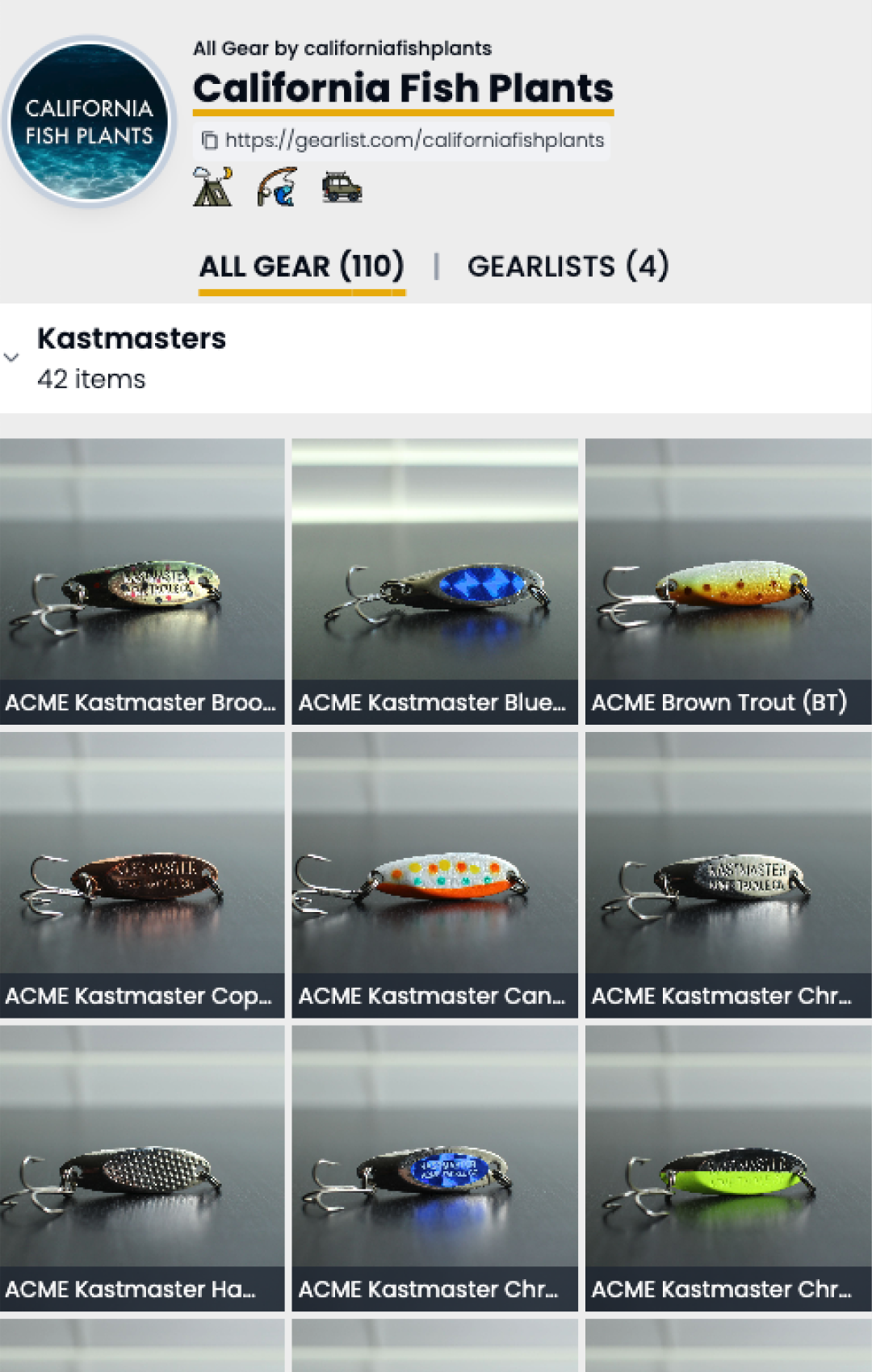Nestled amidst the rolling hills of the San Joaquin Valley, Lake Tulloch extends an invitation to anglers seeking more than just a fishing experience. With 55 miles of glistening shoreline, this vast reservoir is a haven for diverse fish species, promising a blend of thrilling catches and breathtaking scenery.
📈 Latest Fish Plants
Fish here often?
How To Read Fish Plant Graphs
To interpret fish plant graphs effectively, consider the following key elements:
- Blue Vertical Bars and Numbers:
- Representation: The blue vertical bars on the graph represent individual fish plants.
- Weight Measurement: The associated numbers indicate the total weight of the plants in pounds (lbs.) that occurred during a specific week.
- Significance: Monitoring these bars helps identify weeks with higher planting activity, aiding anglers in selecting optimal times for fishing near recent plantings.
- Orange Trend Line:
- Purpose: The orange trend line represents the moving average of all fish plant activities at the specified location.
- Indicator of Activity: A rising trend line suggests a consistent increase in planting activity over the designated period. This indicates the potential for more catch opportunities and signifies a growing fish population over the weeks.
- Interpreting the Moving Average:
- Upward Trend: A rising moving average implies an upward trajectory in planting activity, indicating an increasing number of fish being introduced into the area. This suggests a positive outlook for anglers, as it implies a larger and potentially more accessible fish population.
- Downward Trend (Not Specified): The description does not provide information on the interpretation of a decreasing trend in the moving average. It might be beneficial to include information on what a decreasing trend could signify in terms of fishing prospects.
- No Data Present:
- Possible Explanations: If no data is visible on the graph, it may indicate that the location had no fish plants in the last three months. Alternatively, the absence of data could be due to non-disclosure of fish plants for that location.
- Natural Population: Some fishing areas in California rely on the natural growth of fish populations, and graphs may not show plants if this is the case.
- Graph Disclaimer:
- Data Source: The graphs reflect a combination of publicly disclosed data and estimates. Some locations may disclose fish plants without specifying exact amounts.
- Not Universal: Not all fishing areas have fish plants, and the natural growth of fish populations plays a significant role in many California fishing locations.
Understanding these elements will empower anglers to make informed decisions about when and where to fish based on historical fish plant data.
Note: If no data is present in the graph above, this location may not have had any plants the last 3 months, or may not have publicly disclosed plants. Graphs reflect both publicly disclosed data and estimates, as some locations disclose plants, but not exact amount.
🗺️ Map & Fishing Location
Fish to Expect:
- Rainbow Trout: Dancing near the dam and river mouth, these feisty fighters are prevalent in spring and fall. Trolling with lures or baitfish guarantees an engaging tug-of-war.
- Largemouth Bass: Ambushing amidst weed beds and rocky shores, these aggressive fish favor crankbaits, spinnerbaits, and Senkos. Brace yourself for an exhilarating fight.
- Striped Bass: Elusive giants prowling the depths, with the potential to reach up to 65 pounds. Casting anchovies, sardines, or jigs near the dam and river mouth might lead to a monumental battle.
- Catfish & Crappie: Channel catfish, bottom-huggers seeking worms, anchovies, or nightcrawlers, and crappie, lurking near docks, trees, and underwater structures, add variety to your catch.
Local Insights:
- Mouth of the Tunnel: A hidden gem near the dam, a haven for rainbow trout, especially during shad migrations in spring and fall.
- Rock Wall: Cast alongside the dam for consistent depths and striper action. Keep an eye out for boils and splashes – that might be your monster!
- Tulloch Park Marina: Rent a boat here and explore the coves and points for bass, crappie, and unsuspecting catfish.
Unique Things to Note:
- Seasonal Shifts: Fish follow the water temperature. Spring and fall see trout and striper action, while summer evenings are prime time for bass and catfish.
- Wind & Water Levels: Strong winds can make fishing tough, especially on boats. Fluctuating water levels can affect fish locations. Check conditions before heading out.
- Boating Etiquette: Share the lake! Be mindful of other boats, especially around popular launch areas and the dam.
Specific Locations:
- Deadman’s Point: A rocky point jutting into the main channel, offering a prime spot for bank fishing and catching bass, catfish, and even the occasional striper.
- Oak Creek Arm: Rent a kayak or canoe and explore this tranquil arm teeming with crappie and largemouth bass hiding amongst the lily pads and tules.
- Bass Hill Cove: Cast from the shore or launch a boat here. This cove is known for its submerged trees and structure, attracting hungry bass and offering a chance for a real trophy catch.
Lake Tulloch is more than just a fishing spot; it’s an experience. So grab your rod, breathe in the fresh San Joaquin air, and let the thrill of the catch and the beauty of the lake captivate you. Remember, always follow local regulations, be mindful of the environment, leave no trace, respect wildlife, and fish responsibly. Tight lines!



